(продана за $255.0)
1792, France (1st Republic), Louis XVI. Scarce Silver ½ Ecu (3 Livres) Coin. R!
Engraver: Dupre
Mint Place: Paris (A)
State: France (1st Republic)
Mint year: 1792 (Year 4 of the Revolution)
Denomination: ½ Ecu of 3 Livres (2nd Issue)
References: Duplessy 1719, Gadoury 43, KM-607.1. R!
Condition: Light weight adjusting marks, otherwise VF-XF!
Material: Silver (.917)
Weight: 14.43gm
Diameter: 33mm
Obverse: Head of Louis XVI left. Privy mark (leopard) and date (1792) below.
Legend: LOUIS XVI ROI DES FRANCOIS 1792 .
Reverse: Winged and wreathed Genius (personification of the French People) inscribing table (the French Constitution) on column.
Comment: Fasces, topped by liberty cap in left field, cock in right field!
Legend: (lyra) REGNE DE LA LOI . (A)
Exergue: L'AN 4 DE LA LIBERTE .
In 1792 the early reverses of the French army in the war with Austria and Prussia and threat of the Duke of Brunswick to destroy Paris if the royal family were harmed infuriated the Paris sans-culottes. The king and his family were imprisoned on August 10 in the Temple, and in September, as the Prussians were defeated at Valmy, the Convention declared a Republic. Incriminating evidence against Louis was later found, and he was tried and found guilty by a unanimous vote. He was guillotined on 21 January 1793.
The short-lived French Constitution of 1791 was the first written constitution of France. One of the basic precepts of the revolution was adopting constitutionality and establishing popular sovereignty, following the steps of the United States of America.
In the summer of 1789, the French National Assembly began the process of drafting a constitution. The Declaration of the Rights of Man, adopted on August 26, 1789 eventually became the preamble of the constitution adopted in September 3, 1791.
The Constitution followed the lines preferred among reformists at that time: the creation of a French constitutional monarchy. The main controversy was the level of power to be granted to the king of France in such a system. Gilbert du Motier proposed a combination of the American and British systems, introducing a bicameral parliament, with the king having the suspensive veto power in the legislature, modeled to the authority then recently vested in the President of the United States. This proposal however, failed.
After very long negotiations, the constitution was reluctantly accepted by King Louis XVI in September 1791. Unicameralism was adopted as per the proposal of Emmanuel Joseph Sieyès, in order to disable the possibilities of the nobility's overpowering in the assembly. Gilbert's idea of the king's veto also passed. Sovereignty, though, was clearly defined as belonging to the people: "1. Sovereignty is one, indivisible, inalienable, and imprescriptible. It appertains to the nation; no section of the people nor any individual may assume the exercise there of."
Redefining the organization of the French government, citizenship and the limits to the powers of government, the National Assembly set out to represent the interests of the general will. It abolished many “institutions which were injurious to liberty and equality of rights�. The National Assembly asserted its legal presence in French government by establishing its permanence in the Constitution and forming a system for recurring elections. The Assembly's belief in a sovereign nation and in equal representation can be seen in the constitutional separation of powers. The National Assembly was the legislative body, the king and royal ministers made up the executive branch and the judiciary was independent of the other two branches. On a local level, the previous feudal geographic divisions were formally abolished, and the territory of the French state was divided into several administrative units, Departments (Départements), but with the principle of centralism.
The Assembly, as constitution-framers, were afraid that if only representatives governed France, it was likely to be ruled by the representatives' self-interest; therefore, the king was allowed a suspensive veto to balance out the interests of the people. By the same token, representative democracy weakened the king’s executive authority.
The constitution was not egalitarian by today's standards. It distinguished between the propertied active citizens and the poorer passive citizens. Women lacked rights to liberties such as education, freedom to speak, write, print and worship.
Keith M. Baker writes in his essay “Constitution� that the National Assembly threaded between two options when drafting the Constitution: they could modify the existing, unwritten constitution centered on the three estates of the Estates General or they could start over and rewrite it completely. The National Assembly wanted to reorganize social structure and legalize itself: while born of the Estates General of 1789, it had abolished the tricameral structure of that body.
When war brought radical, and ultimately republican, forces to the fore in the Assembly, this moderate constitution proved entirely unworkable. The August 10th insurrection was the effective end of the monarchy. The constitution dissolved in a chaos of forces, with the radical and even occasionally terroristic Paris Commune, the municipal government of Paris, holding the balance of power in the country until the beginning of the National Convention on October 1, 1792.

|
Добавив:
anonymous 2014-01-29 |
1 Долар США (1776 - ) Срібло
в групі 272 монет / 228 цін
⇑








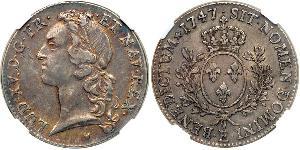

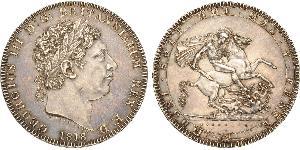

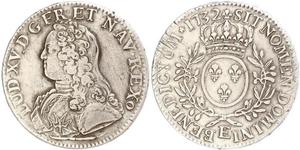
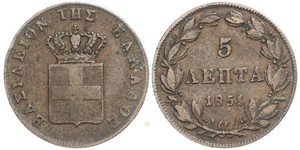
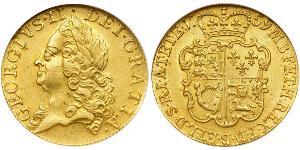


-300-150-Uo3BwcI0YSUAAAEosrUYEDow.jpg)






